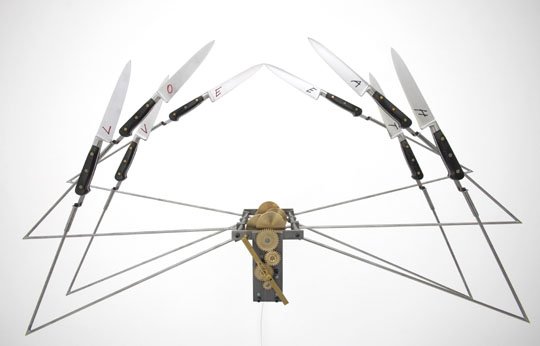If you've been paying attention to recent contemporary art, both in Japan and abroad, you might be struck by the question "Why now?" during a visit to German artist Rebecca Horn's survey at the Museum of Contemporary Art (MOT), Tokyo.
Entitled "Rebellion in Silence: Dialogue between Raven and Whale," MOT's exhibition is the first large-scale presentation of Horn's work in Japan, but it falls short of making a statement about where the artist, who made her international debut in 1972 at one of the world's most prestigious exhibitions, documenta, stands in the current art landscape. The exhibition is split across two levels of the museum, with third-floor gallery space given mainly to mechanized sculptures combining aspects of figuration and disparate fauna such as seashells and feathers, and ground-floor gallery space devoted to Horn's feature films and performance documentation.
In the third-floor galleries, Horn's sculptural works conjure a hellish freak show of possessed carnival attractions, creating an odd confrontation between B-movie props and the staid white cube of an art institution. Greeting visitors is "Raum der Gegenseitigen Zestorung" (1992), which consists of two constructions that face each other from opposing sides of a room. Each construction comprises a tall, mirrored panel from which a thin metal rod with a pistol affixed to its end extends at about head high. The constructions confront each other with icy stillness until the pistols, powered by simple motors, suddenly jerk to life, shaking from side to side.



